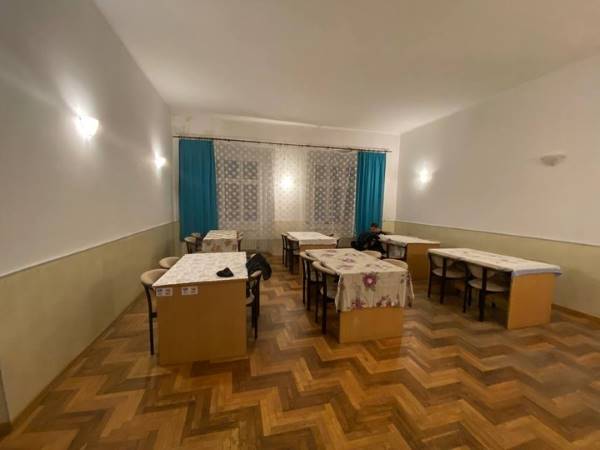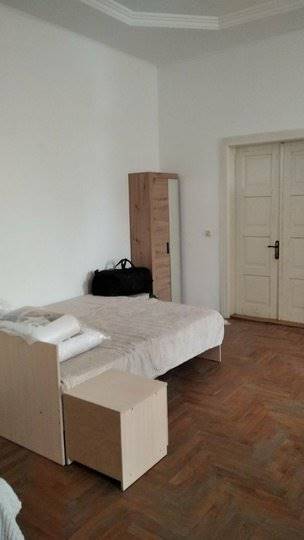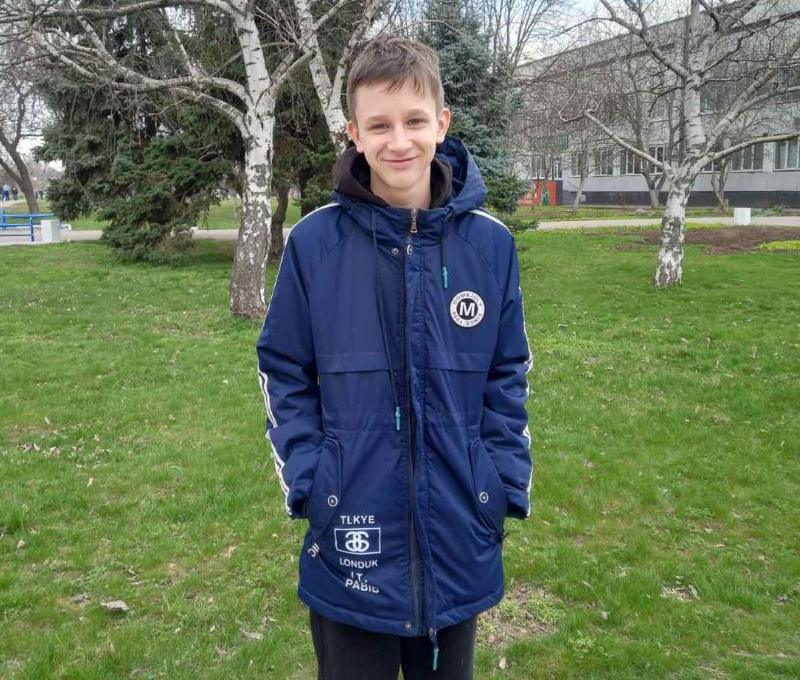
During the year of the war, Lviv Oblast received a record number of immigrants. Western regions are both transit regions for going abroad, and those that receive and resettle Ukrainians from the east, south, and north. This is quite a challenge, because the search for free housing is becoming more and more difficult. State institutions, volunteers and public organizations in cooperation resort to non-standard solutions to create comfortable conditions for people who have lost their homes.
Such a refuge became the ancient monastery in the border Rava-Ruska in the Lviv region and the former Pototsky palace in the Ternopil region, which are architectural monuments of national significance of the 18th century, but were not used for a long time, fell into disrepair and were destroyed. Last year, historical buildings were renovated and adapted for the residence of immigrants. Four family-type children's homes have been set up in Rava-Ruska, which have moved from troubled regions, and families of military personnel live in Ternopil Oblast.
ZAXID.NET talks about the restoration of monuments, their new residents, and non-standard solutions for arranging housing for forced refugees.
***
Lviv Oblast became a refuge for more than 250,000 Ukrainians who suffered from the war - and these are only those who officially registered. The real number is twice as large. In the first months of the war, IDPs were settled in schools, kindergartens and generally large public spaces where temporary accommodation could be arranged. These expenses fell on the shoulders of the regional authorities, because the state concentrated on the defense of the country.

People who stood on the border with Poland for days were even housed in the former church of the border town of Rava-Ruska
Charitable foundations, public and volunteer organizations are actively involved in solving such urgent issues. Considerable help is provided by foreign donors.
In Rava-Ruska, it was possible to successfully implement a project for which funds from the EU grant and the regional budget, as well as contributions from charitable and religious organizations were used. The former monastery, an architectural monument, which was saved from destruction in this way, is a new object for the resettlement. According to the plans, family-type children's homes were placed in the restored monastery, they were relocated from the east during the war.
From monks to orphans
The Baroque monastery of the Reformed Franciscans and the church of St. Michael were built in Rava-Ruska in the 1730s, during the Polish-Lithuanian Commonwealth. The monks of the Catholic order left it after the Second World War, the Soviet authorities set up warehouses and production facilities, a machine-tractor station there. And already during independent Ukraine, the historical building was included in the list of monuments of national significance, but nothing was done to save it. For decades, the former monastery fell into disrepair on the way to the international road crossing point with Poland.

The facade of the monastery and church in Ravi-Ruska
The monastery was handed over to the curia of the Lviv Archdiocese of the Roman Catholic Church in Ukraine, a few years ago it replaced the roof on its own. And in 2019, together with a Polish partner, she submitted a joint project to the cross-border cooperation program PL-BY-UA and won a grant of 2.6 million euros for the restoration of two Reformed monasteries in Rava-Ruska and Wengro (Poland). The share for Ukraine of it is 752 thousand euros, the own contribution of the Ukrainian side is 83 thousand euros.
If at first the main goal of the project was the establishment of international cooperation and pilgrimage tourism, then from the beginning of the war they focused on the social component. The monastery in Rava-Ruska became a shelter even at the stage of restoration works. When the war started, in the spring of 2022, refugees left Ukraine en masse. Located on the road to the checkpoint, the monastery, which was once guided by the main rule of the Franciscan order - "love for those in need", again began to help the needy.

During the restoration of the monastery, charitable organizations distributed food to refugees standing at the border
"In the first wave, when people fled abroad, the monastery became a temporary shelter. Many women with children stood in queues for days. "Caritas Space" organized centers where food was prepared, hot lunches were distributed, people warmed up in the church - there were heat guns, tables with food. One could stay in the monastery for several days, as in a shelter. Then all possible premises were used," recalls project coordinator Markiyan Stefanyshyn.
At the same time, the restoration of the former monastery was completed. Paintings were found on the vault in the corridors and stairwells, but there was a lack of money for their restoration under project financing.
Preserved paintings of the former monastery
The space was divided into four residential segments and designated for living family-type children's homes. Each family has its own rooms, bathrooms, kitchen. The total area occupied by FTCH is 1500 m2.
Project coordinator Markiyan Stefanyshyn said that the entire second floor and a third of the first floor are divided between four FTCH, each of which has an area of more than 200 m2. The rest of the space is occupied by common rooms for common use - a game room, a hall for celebrations, a catechetical room, a common kitchen, and an administrator's corner.
This social project is implemented together with the local authorities. The Lviv regional administration allocated about $ 408 485 for it, with which furniture and household items were purchased for the new residents. Charitable organizations are also involved in the assistance, "Caritas Space" takes care of orphanages.

Most of the premises of the former monastery are already occupied
After the completion of all works, three FTCH settled the former monastery. The fourth building is still waiting for new residents.
«We have nowhere to return»
One of the families living in the former monastery in Rava-Ruska is from the now-occupied Vasylivka in Zaporizhzhia. Spouses Tetyana Gonska and Mykola Denysenko created a family-type orphanage 17 years ago, in which they raise two biological and seven adopted children aged 12 to 21.
"From the beginning of the war, the occupation began in us and we had to leave. Volunteers took us to Austria, and we were there for 7 months. The children went to school, but it was very difficult for them. The smaller ones asked to go back home. In September, we moved to Rava-Ruska," recalls Tetyana Gonska, a mother-educator of the FTCH from Vasylivka.
It was difficult for a large family of 11 people to find suitable accommodation. Tatyana says that she got to know other teachers of the FTCH, who had already settled in Ravi, and they helped her get settled here. Now the family from Vasylivka occupies six bedrooms with several bathrooms.

A family from occupied Vasylivka, which now lives in Rava-Ruska
"The children immediately went to school here. One girl entered a local college to study as a plasterer. They like it here, the native language, the environment. Apparently, we will stay here. Our house is damaged. We have nowhere to return to," explains Tetyana Gonska.
The other two FTCH are from the Kirovohrad and Luhansk regions. Joint entertainment is created for all children, there is a tennis table in the basement. Classes with a psychologist by age group are regularly held here.
Palace in Raiu
The experience of restoring the monastery in Ravi-Ruska is not the only example when an architectural monument is adapted for housing. In the village of Rai near Berezhan in the Ternopil Region, in the former hunting palace of the Potocki, the "Ukrainian Educational Platform" has created conditions for more than 30 displaced persons. If the former monastery will be in permanent use for social projects from now on, then the use of the palace for the housing of the displaced people has been temporarily agreed upon.
The Raiyskiy Palace was built in 1760-1770, and a luxurious park was laid around it. In the 19th century the palace was rebuilt, and the communist authorities in 1952 carried out major repairs, significantly destroying the authenticity. In Soviet times, it was used as a boarding school, and inside, the entire original interior has been destroyed. Repairs were made there, communications were laid, carpentry was changed.

The facade of the Potocki Palace was not restored, because it is a monument, such works require approval
Since 1994, the building has been used by the Ternopil-Zboriv Diocese of the UGCC. An assisted living facility for people with disabilities used to work there. But it was moved because there were not enough funds to maintain the premises. The building was empty for more than a year and began to deteriorate, it needed repair. There was a seepage between the floors due to the destroyed drainage system from the roof: the water did not flow through the pipes, but along the walls.
Local activist and volunteer Denys Vlasenko called on willing people with experience to volunteer for the renovation of the facility in order to use the premises and save it from destruction. Subsequently, the "Ukrainian Educational Platform" initiated the construction of a shelter for displaced persons under the "Domivka" project in the building. For this purpose, about 30,000 dollars from three different foreign donors were attracted for cosmetic repairs, furniture and equipment.
"We turned to the local authorities, the church, in a tripartite format, everyone agreed that heating, internal cosmetic repairs will be done there for the settlement of people from the affected communities. Medium and long-term residence is provided for them here. We agreed on the list of works with the architectural reserve, assured that there will be no restoration or intervention in the facade," said Denys Vlasenko.

Denis Vlasenko coordinates work in the palace
Denys coordinated the work from the process of finding a room to settling people. Repair work was carried out by an organization of resettlers from different regions. They united, registered and began to provide repair and cleaning services. The heating in the palace was completely redone. There was an old gas and solid fuel boiler. New automation, electronics, everything necessary to provide high-quality hot water for such a large number of people was installed to it. Inside the premises on two floors, internal cosmetic repairs were carried out, walls were treated from fungus and mold, bathrooms and a kitchen were equipped.
On the total area of the two-story palace of 500 m2, there are 9 separate rooms of 12-15 m2 each, two common rooms in the format of a hostel - for emergency situations, when many people arrive spontaneously. There is a common kitchen, dining room, four bathrooms, two on each floor.





The restored and lived-in palace of the Potocki family in Raiy
The work was completed at the end of 2022. There is room for about 30 people, but this number is constantly changing. People who have nowhere to live come in there for a temporary stay and go somewhere further. Now military families live here.
Khrystyna Kupcheva, head of the "Domivka" project of the "Ukrainian Educational Platform" charitable organization, said that the agreement on the use of the palace was for a year or two. In the future, this room remains in the community.
"The religious community, which is the balance-keeper of the palace, pays for the electricity. And the city helps with solid heating (firewood). The water here is free, because there is its own source," explained Khrystyna Kupcheva.
As for the preservation of authenticity, there is little of it left in the palace. There is a fireplace in the room, but it has already been reconstructed, the stucco molding has been preserved on the facade. Denys recalls how local historians were worried that the organization would destroy the palace. But all the work done was promptly reported on social networks.

Remnants of luxury in the former palace in Raiu
"We explained to people that we do not do any restorations, because we do not have the right and resources to do so. We made cosmetic repairs so that the destruction of the building did not continue, but did not touch the facade. Because you can't do this in the monument without the appropriate permits," the project coordinator emphasized.
There are archival photos of the palace in Raiy, which will be used for restoration work when funds are available.

There is a luxurious park around the palace
***
Occupying the vacant premises of architectural monuments solves two problems at once. In conditions of limited funding, this is almost the only opportunity to save historical architecture from destruction. It is also an additional area, so necessary to create comfort for people who have lost their homes. The beautiful atmosphere around them will contribute to rehabilitation and psychological adaptation in new conditions. After the IDPs return home, the restored premises will serve the needs of local communities.








